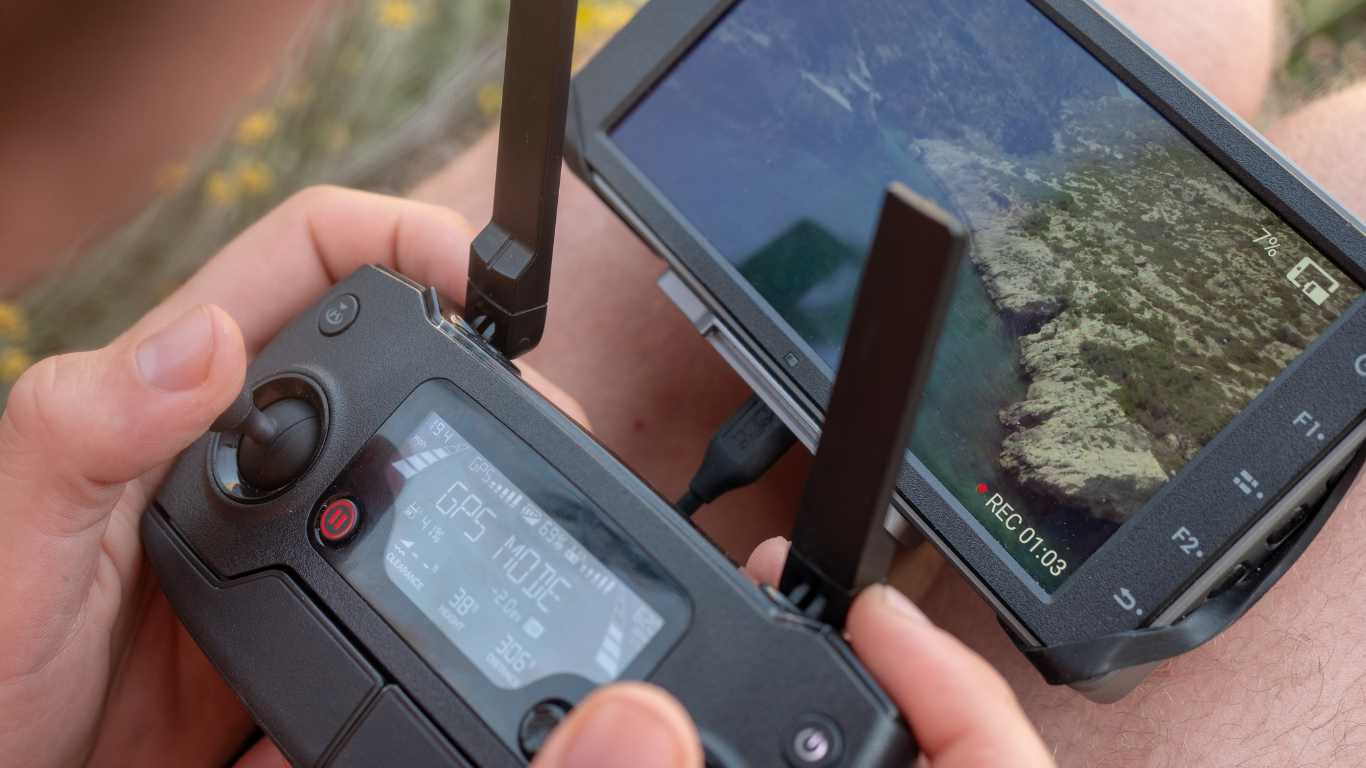In the world of drones, understanding how they communicate with their controllers is crucial for both beginners and experts alike. Effectively controlling and communicating with a drone is essential for safe and successful flights. In this blog post, we will explore the various aspects of drone communication and provide valuable insights into its importance.
Types of Drone Communication Systems
Drones rely on different communication methods to establish a connection with their controllers. Understanding these systems is fundamental to comprehending how drones operate. Let’s take a closer look at some of the common communication methods used in drones:
1). Radio Control (RC) Communication
Radio control is one of the most widely used methods of communication between drones and their controllers. Transmission of commands from the controller to the drone is accomplished through the utilization of radio frequency signals. This method allows for real-time control and is commonly used in professional and hobbyist drones.
2). Wi-Fi and Bluetooth Communication
With the advancement of technology, drones are now equipped with Wi-Fi and Bluetooth capabilities. These communication systems enable the drone to connect with its controller wirelessly. Wi-Fi and Bluetooth communication offer the convenience of controlling the drone through a smartphone or tablet. This method is often found in consumer drones and provides a user-friendly interface.
How Remote Controllers Work
To understand how drones communicate, it is essential to grasp the components and functions of a typical drone remote controller. The remote controller consists of a transmitter and a receiver. The pilot holds the transmitter and sends signals to the drone, while the receiver on the drone receives and interprets these signals. This two-way communication allows for precise control over the drone’s movements.
Signal Interference Issues
Signal interference can disrupt the communication between the drone and its controller, resulting in loss of control or even crashes. It is essential to be aware of common sources of signal interference and take necessary precautions. Some sources of interference include other electronic devices, physical obstructions, and environmental factors such as electromagnetic interference. Understanding these factors and their potential effects on drone communication is crucial for maintaining a reliable connection.
To mitigate signal interference, various techniques can be employed. These include selecting an appropriate frequency band, using antennas with higher gain, and ensuring line-of-sight communication whenever possible. Taking these precautions will help minimize signal interference risk and ensure a stable connection between the drone and its controller.
Safety Measures in Drone Communication
Maintaining a strong and secure connection between the drone and its controller is paramount for safe and successful flights. Here are some important safety measures to consider when it comes to drone communication:
- Pre-flight checks and procedures: Before taking off, performing a thorough pre-flight check of both the drone and the controller is crucial. This includes checking the battery levels, verifying the signal strength, and ensuring all systems are functioning correctly.
- Best practices for safe communication: It is recommended to follow best practices for safe communication, such as keeping the controller within the recommended range, avoiding crowded areas with potential signal interference, and being mindful of other wireless devices that may interfere with the drone’s communication.
Practical Examples and Use-Cases
Drones have revolutionized various industries and are used in various applications. From aerial photography and videography to search and rescue operations, drones have proven to be invaluable tools. Understanding how drones communicate with their controllers is essential for these real-world applications, as it ensures reliable and precise control over the drone’s movements.
Conclusion
In conclusion, comprehending how drones communicate with their controllers is vital for beginners and drone industry experts. Drone pilots can ensure safe and successful flights by understanding the different communication systems, how remote controllers work, and the potential challenges associated with signal interference. Remember to follow the recommended safety measures and best practices to maintain a strong and secure connection between your drone and its controller. Happy flying!
FAQs:
Q1: What are the common communication methods used in drones?
Drones commonly use Radio Control (RC), Wi-Fi, and Bluetooth communication methods to establish a connection with their controllers.
Q2: How does a drone remote controller work?
A typical drone remote controller comprises a transmitter and a receiver. The transmitter sends signals to the drone, while the receiver on the drone interprets these signals, allowing for precise control over the drone’s movements.
Q3: What is signal interference, and how can it affect drone communication?
Signal interference can disrupt the communication between the drone and its controller, resulting in loss of control or even crashes. Interference can be caused by other electronic devices, physical obstructions, and environmental factors such as electromagnetic interference.
Q4: How can signal interference be reduced?
To reduce signal interference, one can select an appropriate frequency band, use antennas with higher gain, and ensure line-of-sight communication whenever possible.
Q5: What safety measures should be taken for drone communication?
Safety measures include performing a thorough pre-flight check of both the drone and controller, maintaining the controller within recommended range, avoiding crowded areas with potential signal interference, and being mindful of other wireless devices that may interfere with the drone’s communication.
Q6: Why is understanding drone communication important for drone applications?
Understanding drone communication is essential for reliable and precise control over the drone’s movements, which is crucial for various real-world applications like aerial photography, videography, and search and rescue operations.
